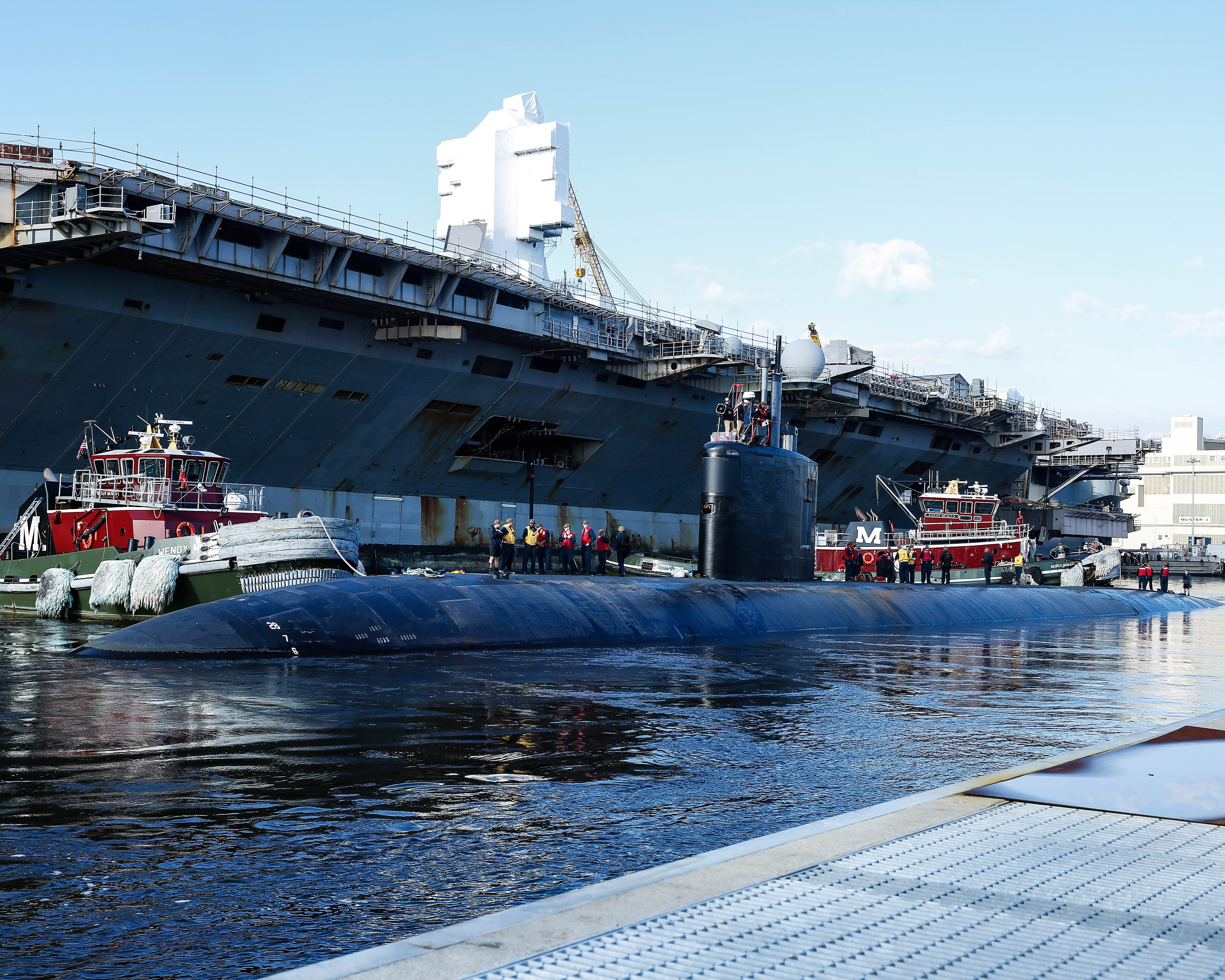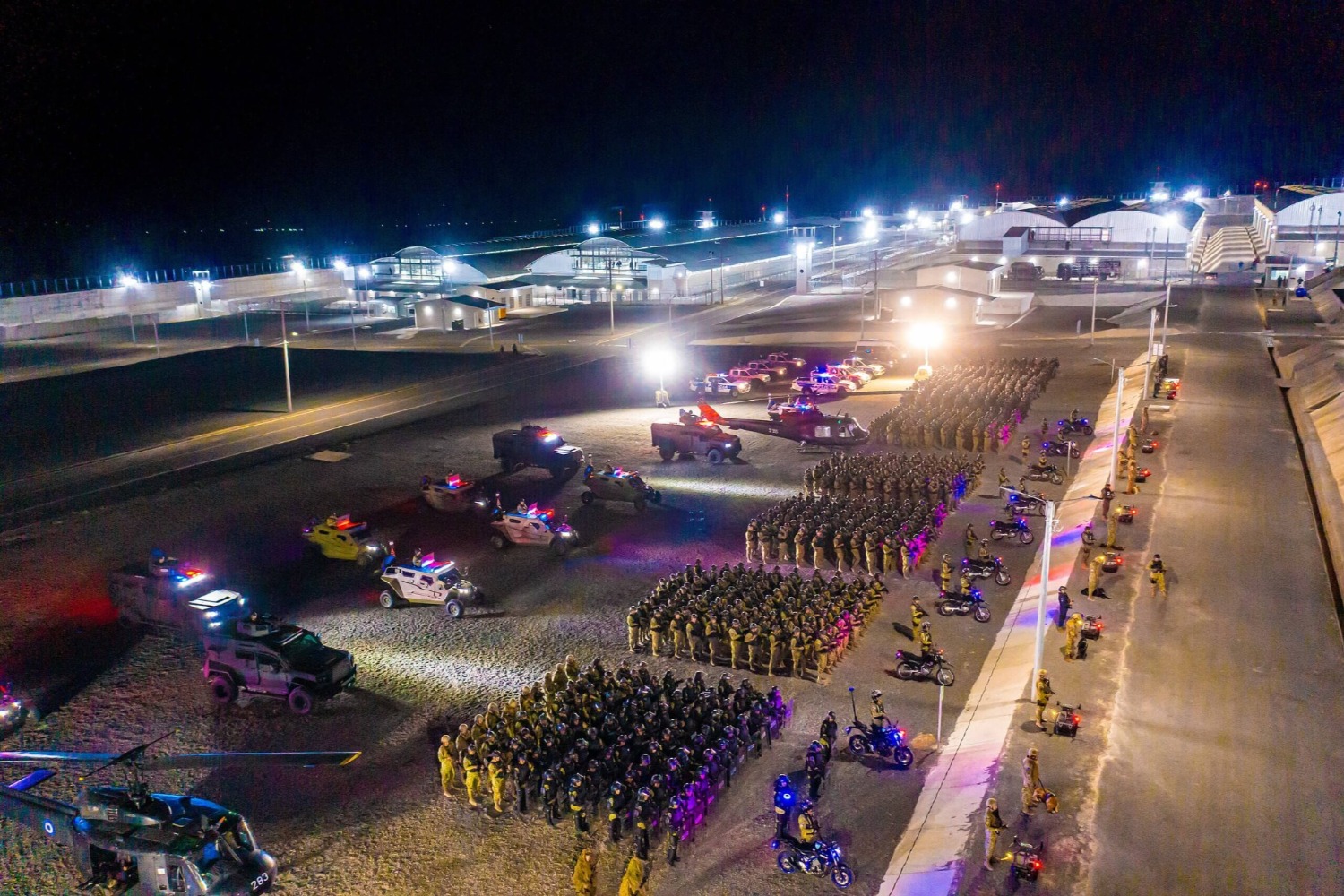Campaign for Nuclear Disarmament Is Wrong on AUKUS Deal
Some nuclear disarmament activists believe that the AUKUS agreement is a breach of international law and will intensify the arms race. What these critics neglect is that the alliance is a response to a greater threat to nonproliferation efforts.

Published by The Lawfare Institute
in Cooperation With

On Sept. 15, Prime Minister Scott Morrison, Prime Minister Boris Johnson and President Joe Biden jointly announced a new enhanced trilateral security partnership—Australia, the United Kingdom and the United States (AUKUS). As part of the agreement, the U.K. and U.S. committed to support Australia’s efforts to acquire nuclear-powered submarines at the earliest achievable date. That promise immediately drew the ire of China, which claims that the agreement will intensify the arms race and undermine international nonproliferation efforts.
General Secretary of the Campaign for Nuclear Disarmament Kate Hudson joined China in denouncing the AUKUS agreement as a provocative “breach of international law” that must be opposed. Hudson’s opposition to AUKUS is premised on a belief that “providing weapons-grade enriched uranium to a non-nuclear weapons state to power military submarines” violates the Nuclear Non-Proliferation Treaty (NPT). Although she recognizes that the NPT does not prohibit the exchange of civil nuclear technology, Hudson highlights that such exchange must be for “peaceful purposes” and that deploying “war-fighting” submarines in the Indo-Pacific region to potentially participate in an armed conflict is hardly “peaceful.”
Prime Minister Johnson correctly observed that AUKUS does not contravene the NPT because it deals solely with nuclear propulsion, not the transfer of nuclear weapons to Australia. Article I of the NPT only prohibits nuclear weapons states from transferring nuclear weapons or other nuclear explosive devices or control over such weapons or devices. Similarly, Article II of the NPT only prohibits non-nuclear weapons states from receiving nuclear weapons or other nuclear explosive devices or control over such weapons or devices. Neither article applies to the transfer or receipt of naval nuclear propulsion technology. Finally, Article IV of the NPT authorizes the “exchange of equipment, materials, and scientific and technological information for the peaceful uses of nuclear energy.” Therefore, Hudson’s assertion that AUKUS violates the NPT is misplaced hyperbole.
AUKUS also does not violate the South Pacific Nuclear Free Zone Treaty (SPNFZ). That treaty prohibits the manufacture, acquisition, possession or control over any nuclear explosive device, but it does not prohibit sharing naval nuclear propulsion technology (Article 3). The treaty also prohibits the stationing of any nuclear explosive device in the territory of any of the contracting parties (Article 5), as well as the testing of nuclear explosive devices (Article 6). Neither article applies to naval nuclear propulsion technology. Finally, Article 4 of the SPNFZ prohibits the transfer of source or special fissionable material, or equipment or material especially designed or prepared for the processing, use or production of special fissionable material to any non-nuclear weapons state unless subject to the safeguards required by the NPT or unless subject to applicable safeguards agreements with the International Atomic Energy Agency (IAEA).
In this regard, Australia committed itself to adhere “to the highest standards for safeguards, transparency, verification, and accountancy measures to ensure the non-proliferation, safety, and security of nuclear material and technology.” Australia also indicated that it would fulfill “its obligations as a non-nuclear weapons state, including with the IAEA.”
Hudson suggests that the transfer of nuclear technology that has potential military application, such as a nuclear-powered submarine, is intrinsically not a peaceful use of nuclear energy. Specifically, she believes that the deployment of a “war-fighting” nuclear-powered submarine that may “potentially” participate in an armed conflict at some future date is not “peaceful.”
Hudsons suggests that all military uses of nuclear energy that have the potential of being used during an armed conflict are not “peaceful.” That proposition is inconsistent with contemporary state practice regarding the interpretation of the term “peaceful purposes.” Most experts would agree that the term allows for all military activities that are not specifically prohibited by a treaty (such as stationing weapons of mass destruction in outer space). This can also include military activities that are consistent with Article 2(4) (prohibition on the aggressive use of force) or Article 51 (right of individual and collective self-defense) of the U.N. Charter.
If one accepts the premise that all military activities that have potential combat applications are not “peaceful,” nations could not operate warships or military aircraft outside their territorial limits. Such a conclusion is at odds with the United Nations’ 1985 Report of the Secretary-General, which indicates that “military activities consistent with the principles of international law embodied in [Article 2(4) and Article 51 of] the Charter of the United Nations … are not prohibited by the Convention on the Law of the Sea.” Similarly, the International Court of Justice has ruled that U.S. naval maneuvers conducted off the coast of Nicaragua during the U.S.-backed counterrevolution against the Sandinista government did not constitute a threat or use of force against Nicaragua in violation of the U.N. Charter.
The U.N. Security Council has likewise considered whether peacetime intelligence collection, which could be used to support combat operations during a future armed conflict, is permissible under international law. The Security Council determined that such military activities are not considered a “threat or use of force against the sovereignty, territorial integrity or political independence of the coastal state … in violation of the Charter of the United Nations.” Following the shooting down of American spy planes over Soviet territory in May and July 1960, the Soviet Union attempted to have the Security Council determine that U.S. intelligence collection flights were “acts of aggression” under the U.N. Charter. The Soviet’s efforts failed by votes of seven to two (with two abstentions) and nine to two, respectively, thereby confirming that peacetime intelligence collection is consistent with the U.N. Charter.
If anyone is spurring a nuclear arms race in Asia, it is China, not AUKUS. China’s rapid expansion of its nuclear weapons program is ripe for criticism. Based on the amount of plutonium that can be produced from reactors that are currently under construction, China’s nuclear arsenal will more than triple in size from 300 to 1,000 deliverable nuclear warheads by 2030. Additionally, since May 2021, China has started constructing hundreds of new ICBM silos to support its silo-based ICBM force expansion. Defense experts believe that these new silos, coupled with China’s advances in its strategic early warning capabilities, provide further evidence that China is moving to a launch-on-warning posture, which will allow China to launch a counterstrike before an enemy first strike can detonate. In that respect, focusing solely on the AUKUS deal neglects that the alliance is a response to a greater threat to nonproliferation efforts—China’s nuclear breakout.





